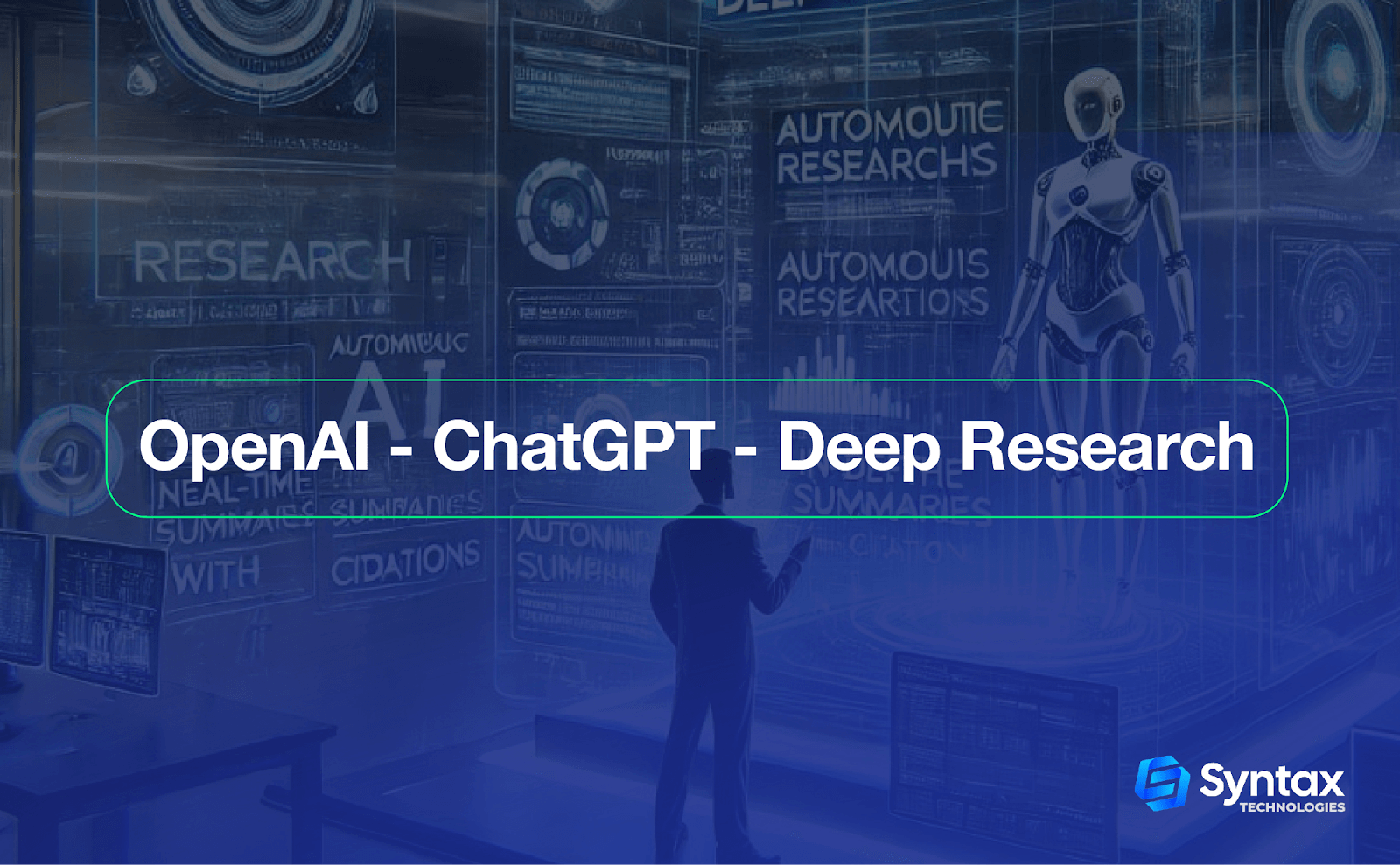Imagine you’re tasked with gathering detailed information on a complex topic—one that requires hours of searching the internet and piecing together data from multiple sources. Sounds exhausting, right? Now, imagine you could skip all that and have an AI do the heavy lifting for you in just 30 minutes. This is exactly what OpenAI’s new Deep Research feature in ChatGPT promises to do.
In this blog, we’ll dive into how Deep Research works, its potential to change the way we approach research, and why it’s being seen as a serious contender in the AI-driven research space, especially in response to competitors like DeepSeek.
What is Deep Research?
At its core, Deep Research is an advanced AI agent built by OpenAI to help you perform complex, multi-step research tasks—tasks that would usually take hours, if not days, to complete. Think of it as a super-smart assistant that can search the web, analyze data, and pull together insights from multiple sources all on its own. You just give it a prompt, and it gets to work.
What makes Deep Research stand out is its ability to reason and think through the information it finds. Unlike regular search engines or tools that just show you a bunch of links, Deep Research actually processes the data, evaluates it, and gives you a detailed report with citations so you know exactly where everything is coming from. This makes it not just a research tool but a smart problem-solving assistant, capable of handling everything from market research to scientific inquiries.
How Does Deep Research Work?
You tell ChatGPT what you’re looking for, and it does the rest. It digs through a bunch of web pages, documents, and data, analyzes it, and then gives you a thorough, well-cited report with all the details you need. You can even upload files (like spreadsheets) to help it understand the context better.
Depending on the complexity, it can take anywhere between 5 and 30 minutes. It’s not like you need to sit there waiting, though—once you give it the green light, you can just sit back, and you’ll get a notification when it’s done. And when it’s finished? You’ll get a neatly packaged report, fully documented with citations, so you can trust where the info is coming from.
Who’s This For?
You might be wondering—who’s going to use this? The answer is everyone, but especially people who need deep, reliable research for work. If you’re in finance, engineering, science, or even policy, this is going to be a life saver. Imagine being able to create detailed reports, pull data from multiple sources, and get solid insights, all without spending hours on it. That’s what Deep Research does.
But it’s not just for professionals. Even if you’re just a regular person looking to buy something important—say, a car, a fridge, or a new computer—it can give you a detailed comparison based on your specific needs. You don’t have to sift through review sites and blogs. It does all the heavy lifting for you.
What’s the Catch?
Deep Research isn’t perfect. It’s an AI, and AI can sometimes get things wrong. Sometimes, it might make mistakes, especially when it’s trying to understand things that are not straightforward or when it encounters conflicting information. It’s still learning and getting better over time.
But the interesting thing is that OpenAI has made sure that every output is fully documented—meaning it tells you exactly where it got the information from. You can check those sources, verify the facts, and make sure you’re not just getting a bunch of random, unverified information.
Why Now? And What About DeepSeek?
Here’s something that makes Deep Research even more interesting: It was launched right after DeepSeek, a competitor AI from China, started making waves. DeepSeek claimed to offer similar research capabilities without the high price tag. But OpenAI’s Deep Research has a secret weapon: it’s designed to reason through information, not just pull stuff from random websites. It’s built to tackle real-world tasks that require deep understanding, and that’s why it’s standing out.
When OpenAI tested Deep Research on Humanity’s Last Exam—an insanely tough test for AI that covers over 3,000 expert-level questions across many different fields—Deep Research scored 26.6%. Now, that may not sound like a lot, but it actually did way better than other models out there, including DeepSeek and OpenAI’s older models. This shows that Deep Research isn’t just a fancy tool—it’s actually smart and capable of tackling tough research questions.
Learn more about Ai DeepSeek:
“Meet Operator: The AI That Does Your Web Tasks for You”
“How DeepSeek’s Low-Cost AI Is Shaking Up Silicon Valley”
What’s Coming Next?
Deep Research is available for Pro users right now, but OpenAI is working on expanding access to others soon, including Plus and Team users. And while it’s already impressive, there are still improvements on the horizon. OpenAI plans to add graphs, images, and more data visualizations in the future, which will make the research reports even clearer and more insightful. Plus, they’re working on ways to make it more cost-effective, so even more people can use it without running into limitations.
Wrapping Up
At the end of the day, Deep Research isn’t just another chatbot—it’s a tool that could seriously change how we do research. It helps you get to the core of what you need, fast, and with high accuracy. Whether you’re a professional working on complex reports or just someone trying to make an informed decision about a big purchase, Deep Research can make your life a lot easier.



